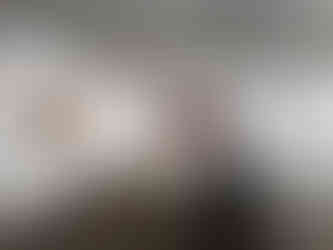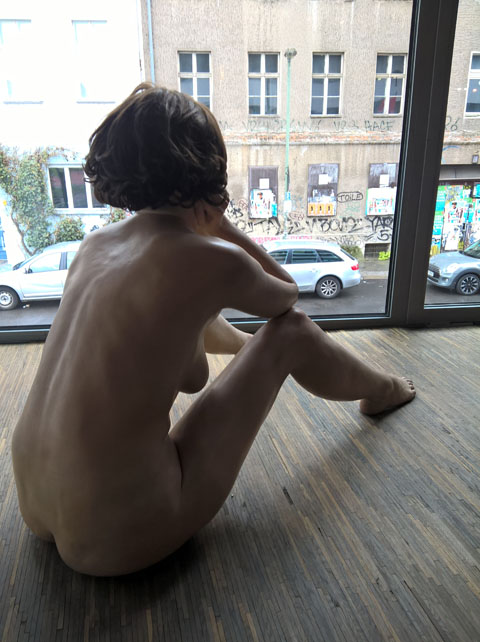Exposing me – Private Exposure at me Collectors Room
- Christian Hain
- Apr 29, 2016
- 6 min read
Updated: Mar 24, 2020
(Berlin.) We trust you’ve all watched that first episode of the new Game of Thrones season. The day after, me Collectors Room opened its new show, and just like the world’s most beloved TV series, Private Exposure is not suitable for all audiences. One of the artworks (a photo by Leigh Ledare) even has something of that “necklace-less moment” to it. But let’s talk about the basics first: me Collectors Room is the immediate neighbour of KW Institute in Auguststrasse. The “collectors” are actually only one guy, me is the private museum of Mr Thomas Olbricht.
Olbricht, heir to a shampoo dynasty, studied natural science and medicine before orchestrating the company’s billion dollar sale to P&G (he’s had to share with a lot of siblings, though), and finally became a university professor and serial art collector. me opened in 2003, and there are many rumours about the meaning of that name – is it a quote by Mr Olbricht: “This is me!”, or maybe “Me collector, you plebs?” Or has it to do with a small community in Western Germany where all car registrations start with those same letters? But as far as we know, Olbricht doesn’t reside there, and he prefers flying anyway. Then, did he actually intend to name it “Collector’s Room” but the apostrophe, well, it just got lost somewhere like scissors in a surgery? These questions are never addressed, and we forgot to ask, too. Maybe you could, and let us know in the comments below.
First thing you’ll notice at me Collectors Room is the atypical interior design. The entrance leads into the cafeteria, where you might sit down and forget about the art altogether. If you continue, you’ll arrive at the shop, and have the choice to either turn upstairs for Private Exposure, or head on to a large exhibition space with a Cindy Sherman solo that is running for some months already (and it just got prolonged for some more). Thomas Olbricht is an avid collector of the American artist, which is maybe not that surprising given that Sherman’s work is also all about her “me” or, more precisely, her many “me”s. Not being huge fans ourselves – knowing one you basically know all her schizophrenic selfies/caricatured role models -, we preferred to go upstairs straight away.
Private Exposure starts with the warning/promise of mature content, underage visitors need to be accompanied. The fact that the three young women who curated the show had to choose among the collection of one man might explain why the works responsible for that warning all focus the female body. Those curators – Fabiola Flamini, Eilidh McCormick and Alice Montanini - are still studying curating at London’s Metropolitan University. That’s right, curating is a degree course now, soon the specific diploma will be indispensable as a work permit. And it really is about time to throw out all the unqualified who dare(d) calling themselves “curators” without a written proof, from Szeeman to Obrist, Enwezor, Gioni etc. Don’t you think?
Take the innovation out, and make everything (appear) standardized/calculable.
However, the cooperation between me and school surely is a win-win situation, Mr Olbricht can be assured of lending his works for future exhibitions, and this, as we all know, is crucial for market value.
The idea behind Private Exposure is “to see and be seen (seeing)”, which sounds like quite an open concept. It’s not all about photography, as you might be led to expect, there is much painting and sculpture too. For example a life-sized man in a Bugs Bunny costume, holding the head in his hands (John Isaacs, What Makes Certain, 1995). Even if you don’t believe in physiognomy, you’ll have to concede, this face does not appear particularly clever. You would probably not consider engaging in a discourse about ... well: about anything with this man, or vote him into a political office (unless you’re American, maybe). “Hodor.” Is this artwork about an economy leaving not many jobs to the mentally challenged, or about a wolf in sheep’s clothing? He does look rather sad than angry, but you’d certainly not want to annoy him. (Other connotations: Maurizo Cattelan, Errotin le vrai lapin, also from 1995, and that deeply disturbing scene from Kubrick’s The Shining with the gay ghosts in fancy dress.)
Sculpture can get even more photorealist. Before Ron Mueck, there was John deAndrea. At me Collectors Room, we find his Sitting Woman (1972) on the floor. If they had turned her around to face A Stool is an Image by Alicja Kwade, it would have been much more convenient for all patrons who try to study the important details of a physically complete doll. Said work by Kwade consists of three mirrors and a stool in a clever play on illusion, appearance and matter.
On the photo side, there’s a topless self portrait of Marina Abramovic holding a skull (we see what you did there, choosing this work: Shakespeare centenary, right?), and a scene from Olbricht’s social class: Philip-Lorca DiCorcia, W September 2000. We wonder if that’s always been the title, or if the artist changed it after 9/11. Taken in a restaurant inside the Twin Towers, it shows two ladies and their grandson dining, the even more botoxed one is looking at the camera, taxing us behind. It’s quite fascinating how her surgically enhanced face approaches the Neanderthalian traits of the afore-mentioned sculpture. The boy seems a perfect brat.
Some of the paintings are blurred photorealism [with a Gerhard Richter’ish Johannes Kahrs: Untitled (Shower LA), 2005, and a Gerhard Richter indeed: Grauer Spiegel (Reminiscence), 2015], some are not: Zbigniev Rogalski, Closer (Self Portrait), 2006, features some fascinating eye-multiplication and an almost neo-cubist play on perspective. Jian Zhan’s Square No. 3, 2005 with people avoiding our eyes as we all do on the street is not bad, either. More highlights include a self portrait in hologram attached to a TV by Pipilotti Rist - Nam June Paik influenced surely - and a mask somewhere between flat sculpture and three-dimensional photograph on the wall (of faces). In it, Evan Penny digitally merged portraits of actual faces to create something – or –one - new (No One – In Particular #15, 2005).
Downstairs again, we discovered more works in the cafeteria. There’s Rijneke Dijkstra, the softcore Larry Clark, with two beach portraits for the ephebophile visitor, and a row of photo portraits without red eye reduction, failure made art [Paul Graham, Untitled (red eyes), 1999]. The soul hides behind the eyes, can these portraits still be useful to recognise the person? There’s even a work in the ladies’ restroom, no really: Pipilotta Rist put a camera inside the bowl for the ultimate selfie, and to remind us of the omnipresent surveillance (a funny coincidence how the exact same idea appeared in a Japan themed Simpsons episode long ago; an even greater coincidence how this episode was shown on TV while we were writing this text).
No, we did not sneak in - as a man you only need to announce your visit at the counter beforehand. This, one of the curators assured us, is not a discrimination against male visitors, nor on the contrary meant to offer them insights into hitherto unknown worlds (it was fascinating in there, so clean, perfumed, and indeed large enough to visit in groups), but they simply had to decide for one of the restrooms - is the work an edition, and the Olbicht Collection only owns one certificate, or did Rist indeed sell hardware and idea as a single piece?
The show has nice works, but in terms of offering new insights it’s rather limited. Is not everything in visual arts about viewing in some way? Even that photo of a man wearing black glasses, a cane and the sign, “I can’t see anymore of this art” (Timm Ulrichs, 1975) is no exception. See it this way: Every private museum is about letting people see what you like to see so much that you’ve spent a fortune on it. There’s too much of it to show everything at the same time, so you need a couple of curators to make a selection and come up with a concept.
Private Exposure, 27 April-22 June, 2016, me Collectors Room, Berlin










Comments